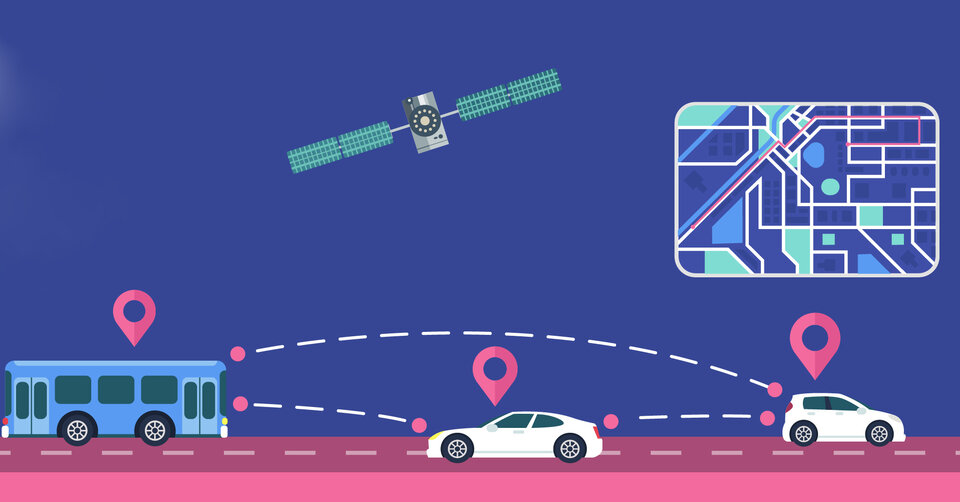Navigation at Ministerial Council 2022
The ESA Council at Ministerial level, CM22, is a time for critical decisions. In November 2022, ESA’s Member States, Associate States and Cooperating States will come together to strengthen Europe’s space sector and ensure it continues to serve European citizens.

ESA has been pioneering satellite navigation for our continent since the 1980s, then joined forces with the European Commission in the following decade to ensure Europe’s sovereignty in this crucial strategic, technological and commercial sector. The result was the Galileo satellite navigation system, today delivering the most accurate positioning fixes in the world, and the EGNOS augmentation system, sharpening GPS signals to allow them to be used for aviation and other safety-of-life uses.

Satellite navigation has in the meantime become the single largest downstream market for space technology: the worldwide satellite navigation market of devices, applications and services is worth about €150 billion per year and caters to a total of 6.5 billion receivers around the world.
With both Galileo and EGNOS delivering excellent performance and continuously evolving, ESA’s Directorate of Navigation is working towards reinforcing the future capabilities of satellite navigation at ESA’s Ministerial Council in November.
Main goals in a nutshell
- Introduce the FutureNAV programme to allow ESA to adequately respond to emerging trends in future satellite navigation.
- Develop and perform in-orbit demonstrations of low-Earth orbit navigation satellites to supplement the existing Galileo system and support future “LEO-PNT” infrastructures.
- Develop and fly the GENESIS mission which will map the shape of our ever-shifting home planet more precisely than ever before.
- Extending ESA’s successful Navigation, Innovation and Support Programme (NAVISP), working with European businesses and researchers to develop future navigation technologies.
- Support the extension of telecommunications and satellite navigation coverage to the Moon through the cross-Directorate Moonlight initiative.


Access the video
Extending the future of satnav
Through its new FutureNAV Progamme, ESA is preparing to use its technological expertise and knowledge of satellite navigation and PNT for the benefit of European industry, researchers, institutions and ultimately, consumers. The programme is designed in such a way that the Agency will be able to lead the way in responding to trends in satnav effectively and in an agile way.
Bringing satnav closer
Traditional satellite navigation systems operate in medium Earth orbit (MEO) with signals travelling thousands of kilometres to reach Earth. Extending GNSS to low Earth orbit, LEO, would offer higher signal strength, with more reliable indoor coverage and resistance to jamming. Two-way authentication signals would also be possible over this shorter distance. The concept for Europe has been studied by ESA, but now is the time to move to practical in-orbit demonstrations, to help make satnav coverage more robust and place Europe in the technical lead.

Mapping our home world
The GENESIS mission will help the global scientific community to improve modelling of our home planet as the satellite will combine four satellite-based measuring methods on a single platform for the first time. Such combined observations will serve to shrink biases and errors, to enable an updated global model of Earth – the International Terrestrial Reference Frame, employed for everything from land surveying to measuring sea level rise.
The benefits would include more accurate navigation, environmental and climate change modelling, and precise orbit determination of Galileo satellites and other space missions, resulting in better data and service quality.

Boosting European competitiveness in satnav
Already the largest downstream market for space technology, GNSS is only growing larger, with expected growth of 10% annually over the coming decade. Global GNSS downstream market revenues are projected to reach €492 billion by 2031. Europe should not be allowed to fall behind in this vital arena.
So since 2017, ESA has applied its hard-won expertise from Galileo and EGNOS through NAVISP to devise innovative navigation concepts and applications across the wider PNT domain, seeking to sharpen overall European competitiveness.


Access the video
ESA’s Navigation Innovation and Support Programme (NAVISP) works with European businesses and researchers to develop innovative solutions, as well as supporting Member States in their national objectives. More than 200 NAVISP projects have been supported to date. NAVISP-driven improvements in the availability and precision of PNT promise to make the transport sector safer and more sustainable, including assisted and automated driving.
At CM22 ESA will seek support for a new, third phase of NAVISP.

Extending satnav to the Moon
ESA’s navigation specialists are also involved in an ambitious attempt to extend satellite navigation and telecommunications coverage to the Moon through the Moonlight initiative. Beginning with a satnav receiver flown in lunar orbit aboard the Lunar Pathfinder mission, Moonlight will extend to a constellation of telecom and satnav satellites in lunar orbit.
With positioning and communication services available for all Moon missions, instead of requiring costly one-off support, lunar exploration will become much more sustainable. It will be as if the Moon has come closer, transformed into Earth’s eighth continent rather than a far distant world.
ESA’s Council at Ministerial Level
Next month ESA Director General Josef Aschbacher presents his proposals for the future of Navigation and all other ESA Directorates to Europe’s space ministers for approval, setting the course for Europe’s future in space. Find out more here.
More information or press enquiries:














 Germany
Germany
 Austria
Austria
 Belgium
Belgium
 Denmark
Denmark
 Spain
Spain
 Estonia
Estonia
 Finland
Finland
 France
France
 Greece
Greece
 Hungary
Hungary
 Ireland
Ireland
 Italy
Italy
 Luxembourg
Luxembourg
 Norway
Norway
 The Netherlands
The Netherlands
 Poland
Poland
 Portugal
Portugal
 Czechia
Czechia
 Romania
Romania
 United Kingdom
United Kingdom
 Slovenia
Slovenia
 Sweden
Sweden
 Switzerland
Switzerland

























